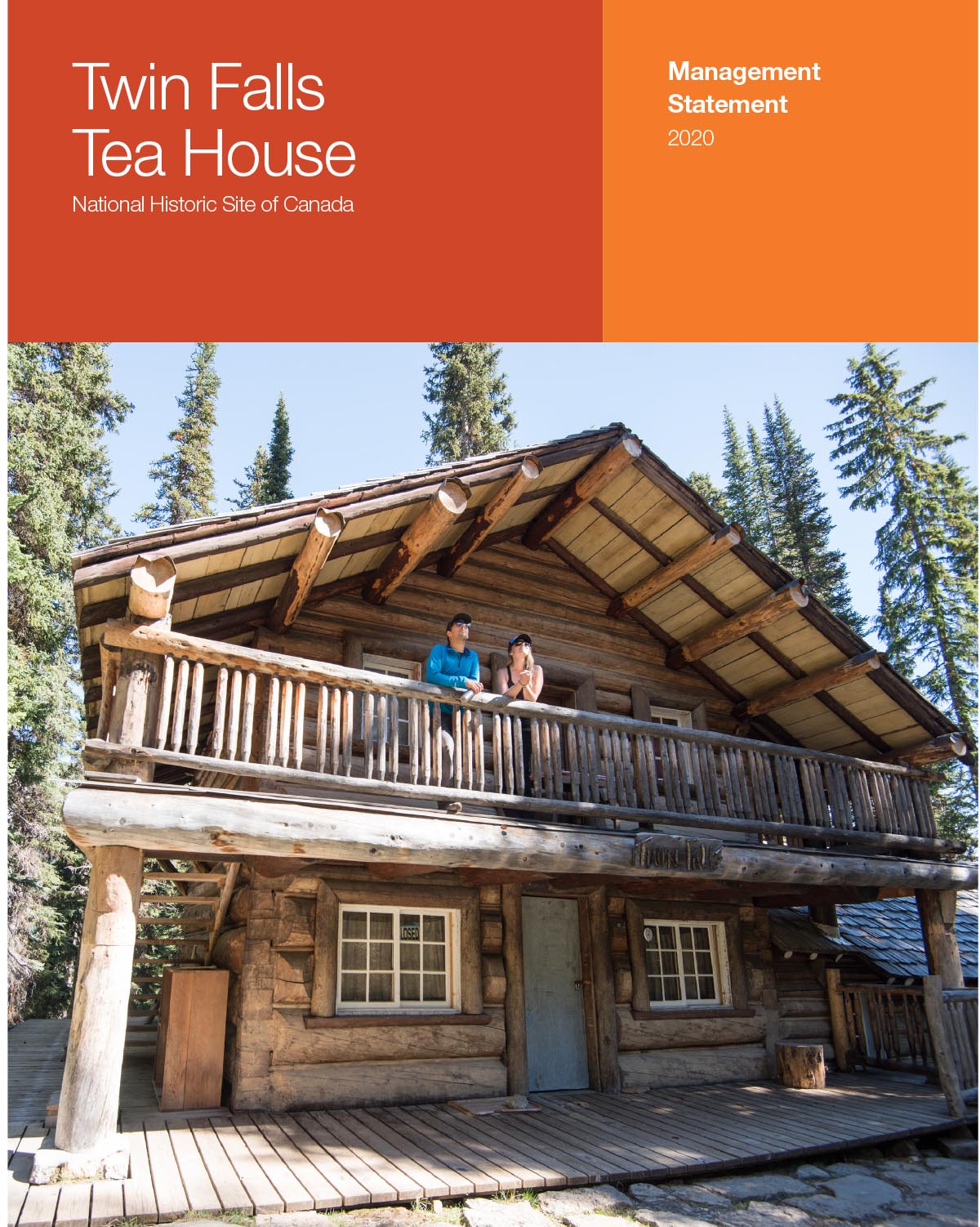Twin Falls Tea House National Historic Site of Canada Management Statement, 2020
Twin Falls Tea House National Historic Site
Table of contents

© Her Majesty the Queen in Right of Canada, represented by the Chief Executive Officer of Parks Canada, 2020
Cette publication est aussi disponible en français :
Énoncé de gestion du lieu historique national du Canada du Salon-de-Thé-des-Chutes-Twin, 2020
For more information about the management statement or about Twin Falls Tea House National Historic Site of Canada:
P.O. Box 99
Field, BC V0A 1G0
Canada
Approval
Approved by:
Rick Kubian
Field Unit Superintendent
Lake Louise, Yoho and Kootenay
Parks Canada
Introduction and overview
The Parks Canada Agency manages one of the finest and most extensive systems of protected natural and historic areas in the world. The Agency’s mandate is to protect and present these places for the benefit and enjoyment of current and future generations. This management statement outlines Parks Canada’s management approach and objectives for Twin Falls Tea House National Historic Site.
Twin Falls Tea House National Historic Site was designated in 1992. The Tea House was designated because it provides a good representation of the Rustic Design Tradition, and because it is associated with outdoor recreation in the national parks. The original single-story hut was erected in 1908 by the Canadian Pacific Railway for use as an overnight shelter for backcountry trail rides. A second story and an adjacent chalet were constructed in the 1920s and later linked to the original building. Its location near the foot of Twin Falls in the Upper Yoho Valley, approximately 8.5km from the trailhead at Takakkaw Falls, has contributed to its appeal as a heritage attraction and destination for generations of hikers exploring the Yoho backcountry.
Today the Twin Falls Tea House persists as a well-preserved example of rustic log building design and construction. It is run by a private operator under a Parks Canada Licence of Occupation. Although the Tea House continues to provide rustic overnight accommodation to park visitors on an occasional basis, it does not operate fully throughout the regular summer operating season. Basic interpretive information is provided on-site and the Heritage Sites and Monuments Board plaque is mounted in front of the Tea House. The building retains a strong sense of place, evoking the early history of log building construction and backcountry recreation in the Rocky Mountains.
Management approach
Parks Canada will continue to manage the Twin Falls Tea House as a significant heritage attraction that provides park visitors with a sense of the style of building and mode of accommodation typical of early wilderness recreation in the Rocky Mountains. Parks Canada will prepare a new Licence of Occupation that will provide for the continued operation and maintenance of the site by a third-party. A key consideration of the new licence will be the revitalisation of the visitor experience at the Tea House. Parks Canada will manage vegetation around the national historic site to reduce the risk of wildfire to the buildings using FireSmart guidelines and strategies.
Management objectives
Resource conservation
The log buildings, heritage character, and associated historic resources at Twin Falls Tea House are protected, monitored, and maintained in good condition. Natural vegetation around the site is maintained to reduce wildfire risk to the historic structures.
Visitor experience
Overnight guests and day hikers visiting Twin Falls feel welcome to explore the area surrounding the tea house, and appreciate the heritage architecture and natural setting of the site.
Public appreciation and understanding
Information on the historical significance of the Tea House is available to overnight guests and day hikers. Key messages are also communicated to others through interpretive signage, the park website and on social media.
Links
- Date modified :